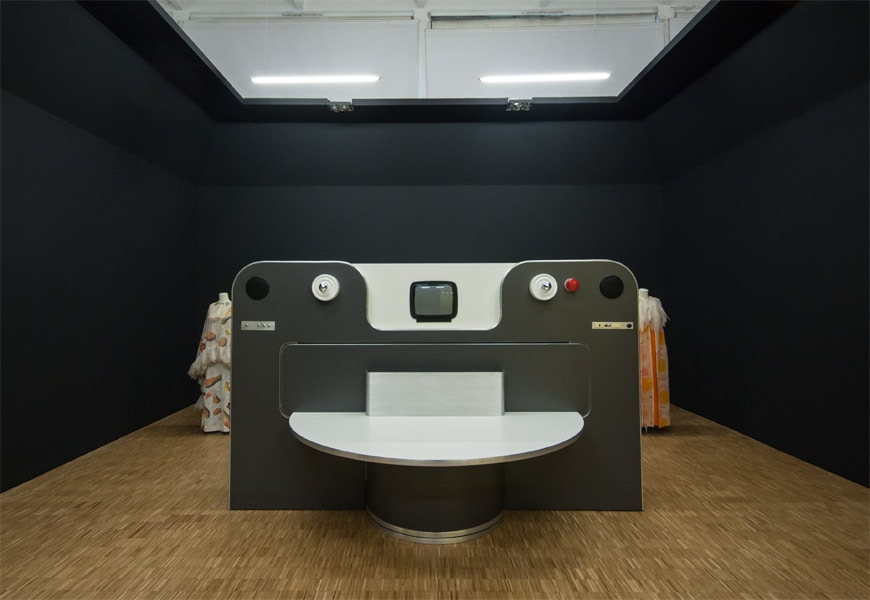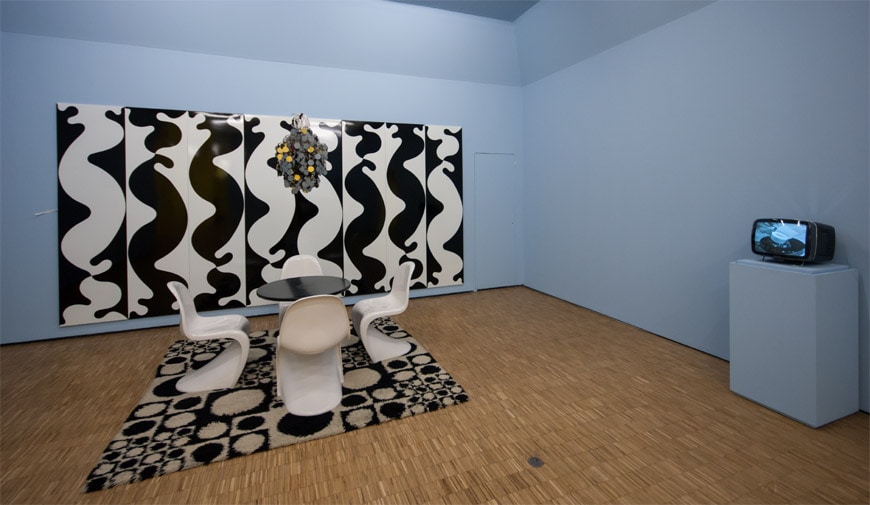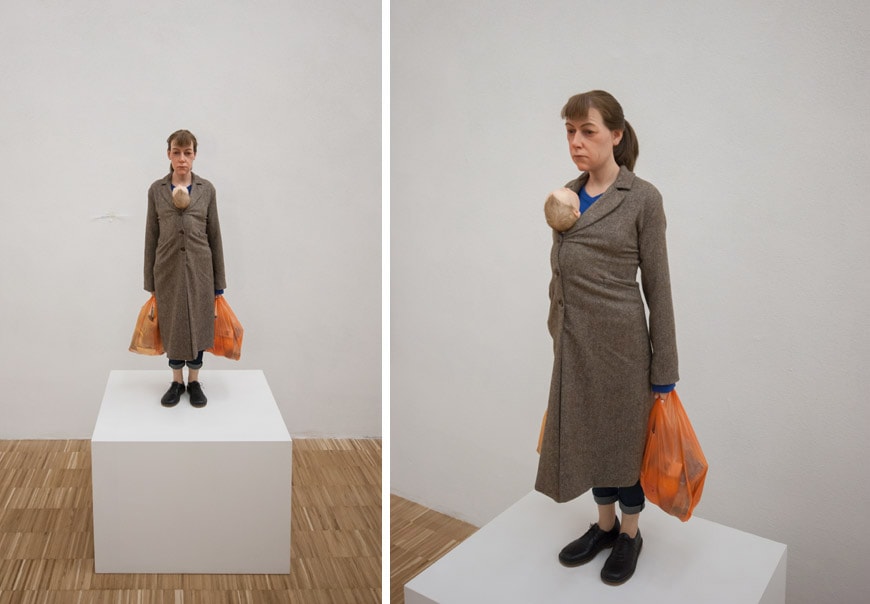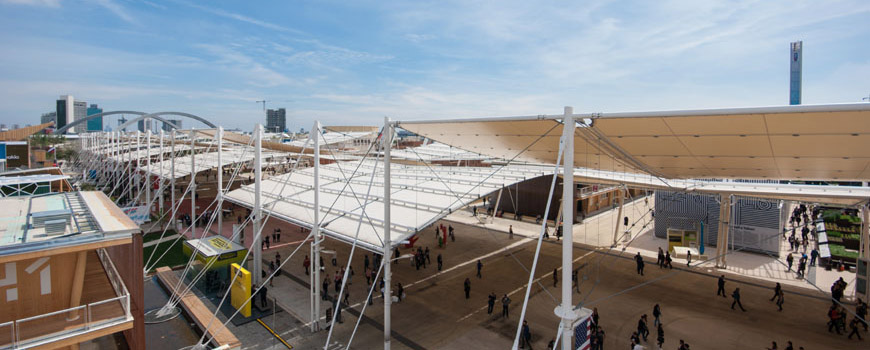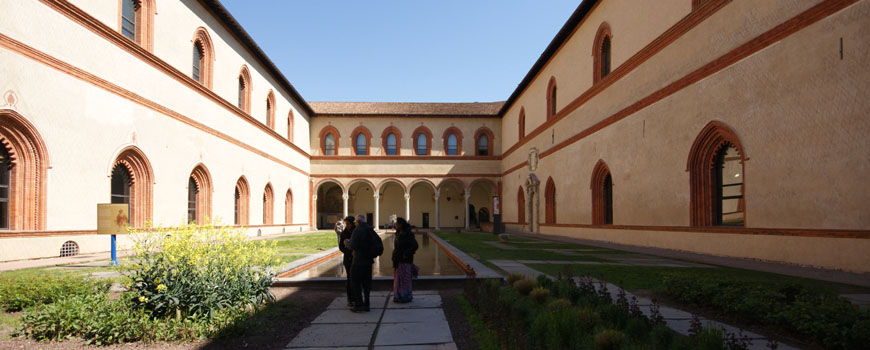The Arts & Foods exhibition at the Triennale of Milan
Triennale di Milano
Exhibition design: Studio Italo Rota
Graphic design: Irma Boom Office
Robert Indiana, The Electric Eat, 1964/2007
“Arts & Foods” exhibition at the Triennale of Milan
The exhibition Arts & Foods. Rituals since 1851, running from April 9 to November 1, 2015, is the first section of the EXPO 2015 to open, as well as the only thematic area of the Expo located in the center of Milan.
The exhibition, inspired by the main theme of the EXPO, “Feeding the Planet, Energy for Life”, is aimed to investigate the manifold relationship between food, its rituals, and different means of artistic expression over a 160-year long period -from 1851, the year of the first World Exposition in London, to present day.
Arts & Foods extends on a surface of 7,000 square meters inside a Milan cultural landmark, the Palace of the Triennale, and also includes an open-air section, located in the Triennale’s garden.
The garden, foreground: Paul McCarthy, Daddies Tomato Ketchup Inflatable, 2007
Exhibition concept and layout
The exhibition, which combines two different points of view – one chronological and one thematic – is a complex narration presenting various spaces where food is prepared and consumed, artifacts and utensils on which the indoor and outdoor rituals of eating are based, artworks, architectures, films, and graphics.
Arts & Foods is divided into three parts, each housed in a different gallery.
From 1851 to the post-war era
The first section, located on the ground floor inside the “Curva” gallery, is a journey from the mid-19th century First World Exposition in London up to the post-war era, based on a vast set of items related to food and nutrition: exceptional works of art, from the 19th-century figurative painting to the early-20th century abstract movements; utensils, tableware, cooking books; applied artworks, reconstructions of “typical” domestic and retail spaces, as well as architectures – including projects by Rietveld, Le Corbusier and Jean Prouvé.
A reconstruction of a Milan early-20th-century cafe
The dining room of “Casa Cimino” by Gerardo Dottori, early-1930s
An early-20th-century butcher shop
A display case with works by Man Ray and Marcel Duchamp
American kitchens and Lester Beall’s AD for the Rural Electrification Administration, late 1930s
Pavoni “Concorso” , coffee machine by Bruno Munari and Enzo Mari, 1956
Le Corbusier: kitchen unit type 1 for the “Unité d’habitation” in Marseille, 1955
Jean Prouvé: “La maison des jours meilleurs”, 1956
From the 1950s to the 1970s
The second part of “Arts & Foods”, housed in the “Aulenti” Gallery, depicts the period from the 1950s to the 1970s. This section presents all the hopes and contradictions of a period that embodied an ideal of optimism and innovation but eventually came to criticize the degeneration of that ideal.
On the one hand, in the years immediately following the end of World War II, a confident belief in modernity introduced new materials for furniture, utensils, and food containers, aimed at a domestic space that is freer and freer from the conventions of the past; furthermore, new typologies of space and new objects were created to support habits and trends related to the mass consumption of food.
On the other, many begin to criticize this social model, and especially its degeneration into consumerism; like Warhol through his “serialized” food icons, the hippie culture, and many desecrating filmmakers, such as Antonioni, Bunuel, and Kubrick, to name a few.
Coca-Cola vending machines
left: Tom Weisselmann, Still Life; right: Andy Warhol, Campell’s soup cans
Jean Maneval, Maison Bulle, 1968
Joe Colombo, Roto-living unit, 1969
Verner Panton, furniture, Vitra, 1969
From the 1970s to the present day
The present-time section of the exhibition is located within the “Cube” gallery on the first floor; here, works by contemporary artists express the complexity of what food represents these days. Visions depicting a, often crude, reality where “the food question” involves politics, consumerism, over-production, and globalization of food, only in theory available everywhere, are placed alongside critical proposals envisaging a more strict relationship between food and local communities.
Installation view, on the left: Mario Merz, Igloo, 1989
Left: Subodh Gupta, Ancestor cupboard, 2012. Right: Gregory Crewdson, untitled (Sunday roast), 2005.
Jannis Kounellis, Untitled, 2013
Vanessa Beecroft, VB52, 2003-2007
Frank O. Gehry, GFT fish, 1985-1986
Claes Oldenburg and Coosje Van Bruggen, left: installation, 1987; right: Leaning Fork with Meatball and Spaghetti III, 1994
Urs Fischer, Bread House, 2004-2006
Ron Mueck, Woman with shopping, 2013
Arts & Foods. Ritual since 1851
Triennale di Milano
9 April – 1 November 2015
http://www.triennale.org/en/
All photos © Riccardo Bianchini, 2015
copyright Inexhibit 2024 - ISSN: 2283-5474














